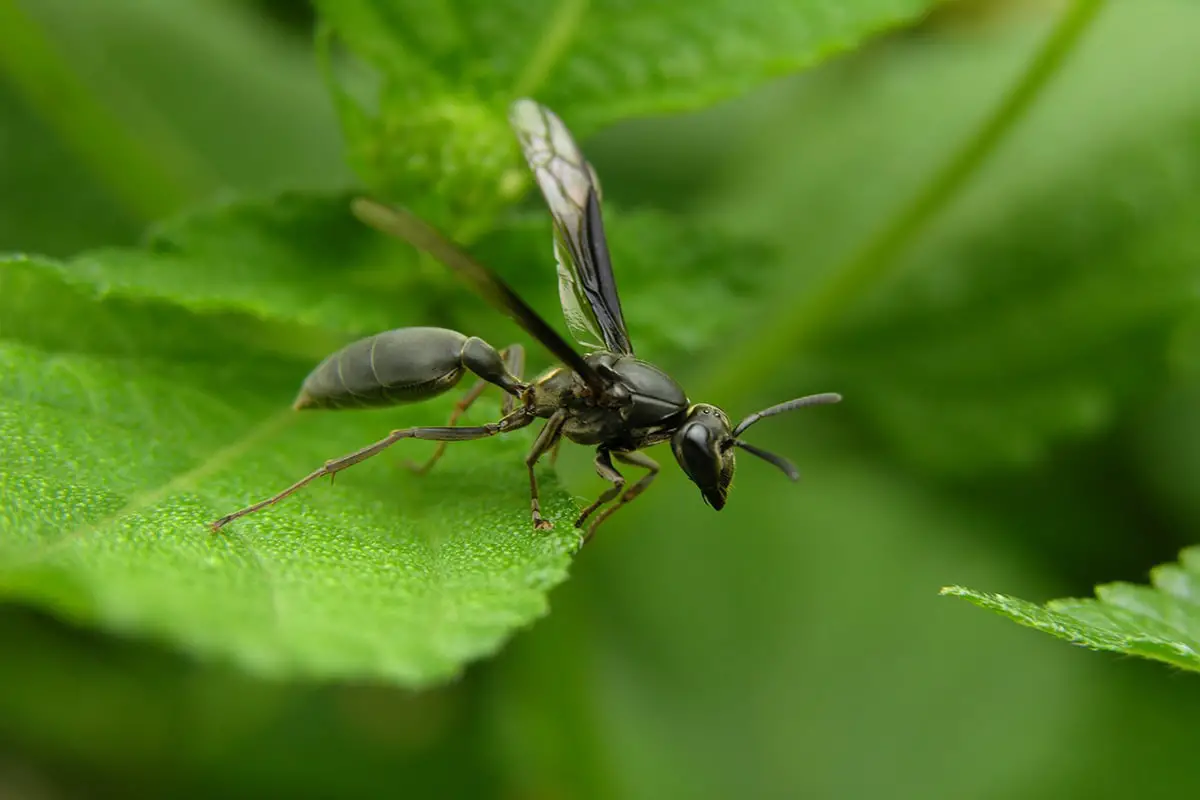

For those initiated in gardening, an important question arises about a series of insects that may or may not be harmful to our crops. It’s about the flying ants. They are capable of entering tiny and small holes in the earth or sand and are considered ants as workers. They fulfill the function of taking care of the entire anthill and can become very annoying if we have plants and crops in our garden or orchard.
In this article we are going to tell you about all the characteristics, biology and treatment of flying ants.
Key features


They are small insects that fulfill the function of taking care of the entire anthill since they are able to move through the air and have greater vision. They are ruled by one or more queens found in the anthill. Although we do not notice it, we mostly have in the garden a greater number of ants that do not have wings. However, as we can better visualize them, we notice more the presence of flying ants.
Flying or very specific ants are known by the name of winged ants and are reproductive ants. They have a highly articulated antenna and a tiny waist. The most normal thing is that the painting of this type of ants is compared with those of the queen. However, the queen’s waist is much narrower. The rear wings are really small and hardly help in flight. Thanks to their wings they can be quickly differentiated from other ants. Even when you have lost your wings, it can be easily distinguished by the very narrow shape of the waist and can be differentiated from thermals.
The actuality, there are more than 13.000 types of ants and among them we have the flying ants. One of the characteristics that stands out of this species is that the females are always the ones that exceed the males in size. Flying ants are workers and females are considered infertile. Therefore, it is the most normal thing to find this type of insects looking for some food, water, food for the anthill. Although there are some slightly more different breeds where some flying workers are found, the most normal is that the females are not reproductive.
A curiosity is that in it is common to see that these species establish a search to be able to enter the same colony. The fact of observing thousands of flying ants is a more typical act of the rainy season.
Habitat and behavior of flying ants


The habitat of these flying ants is quite wide. Sometimes it seems somewhat more complex to explain. And it is that this type of ants can appear both in deserts and in forests. It can also have its habitat in the backyards of houses, tropical jungle, in caves and in areas where there is little humidity and high temperatures. The only place where flying ants cannot be found is at the North Pole. This is because they are insects that cannot stand the cold. They will always choose dark and a little unknown places in order to survive better. As long as there is some sand or earth around them, they can adapt perfectly to the environment.
They feed mainly on plants, tree leaves, rotten fruits, vegetables, dead animal meat, fungi, bush leaves, etc. They can also hunt other types of insects if they cross their path. It should be noted that anthills are quite easy to find. They are holes that can be clearly seen in sand, trees, old wood, dirt, etc. It is inside where these ants make their lives.
We must be careful in our garden because termites are often confused with flying ants. You have to differentiate them by looking at the thorax, head and abdomen. After that we will not assume that termites are only composed of two parts: head and body. Once we see that flying ants have a thorax, we will no longer confuse flying ants with termites.
Reproduction of flying ants


We are going to analyze the behavior of these ants when it comes to reproduction in order to better control the populations in our garden. The first thing we must bear in mind is that these ants are not different from the others to find production. They practice sexual intercourse for a whole day and the males die shortly after copulation and most of the females are still alive. These females are ready to create their own colonies to officially become queen. They will lose their wings and the only purpose will be to create many more eggs.
Most of the time, mating only takes place once a year. At this time, both the males and the queens perform the nuptial flight. This means that they officially leave the colony and generate their own outer space. They choose high places for copulation such as trees, roofs and hills. They can also mate with ants from neighboring colonies. The males die shortly after copulation while the female can fly to another anthill and be in charge of it.
Are they harmful to the garden?
The answer to this is according to quantity. There are many ants that establish a relationship of mutualism with aphids, so they can be a big problem. When aphids feed on the sap of plants and a sugary substance called molasses that is a real delicacy for ants. Therefore, they establish a relationship of mutualism with them defending aphids from their natural predators in exchange for molasses.
To avoid this problem we must use potassium soap in combination with some neem oil.
We also have the part where ants are beneficial. And is that they are good soil removers to increase mobility and air in the soil. It also incorporates organic matter and they are predators of many pests such as the weevil and termites.
I hope that with this information you can learn more about flying ants and their effects in the garden.

